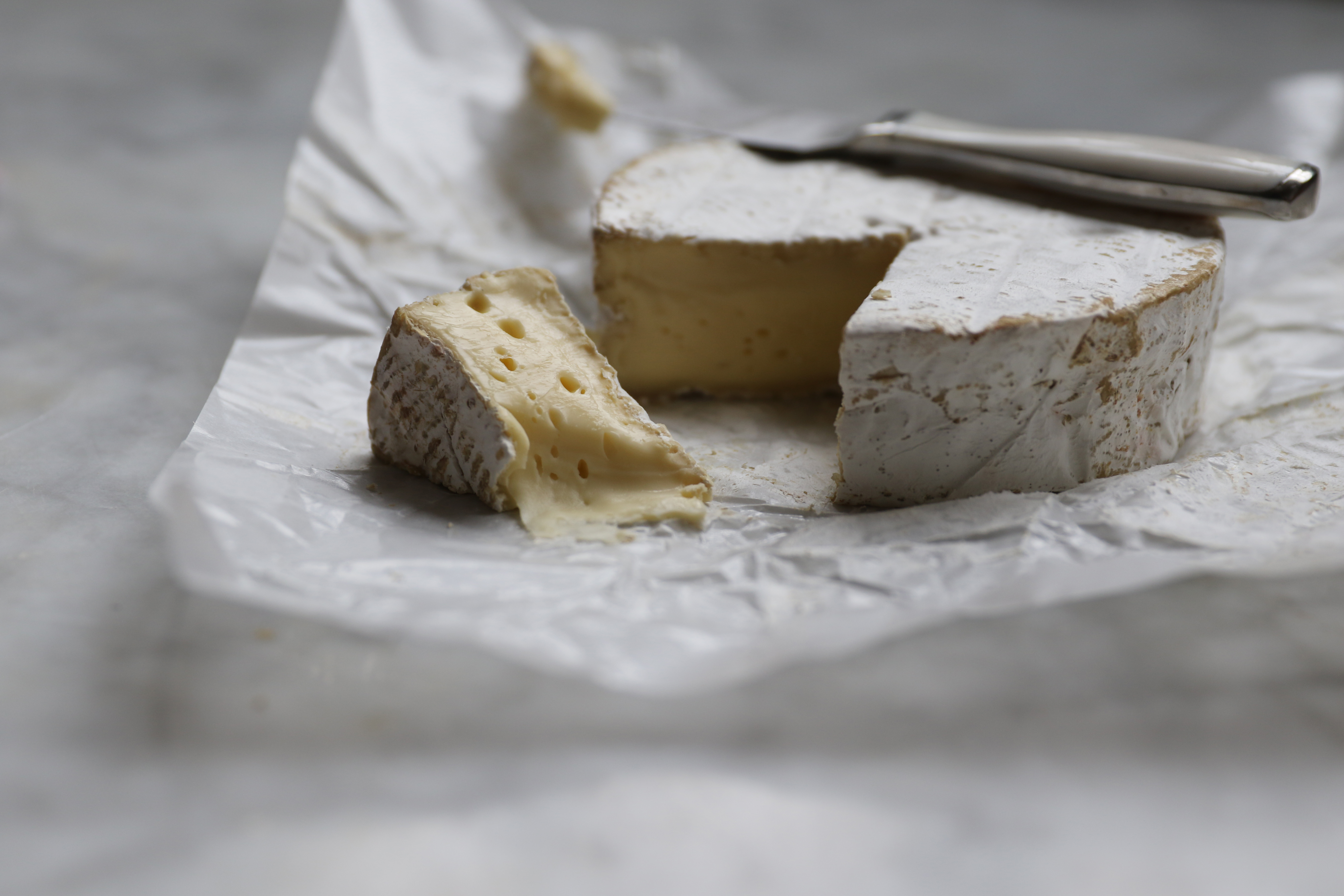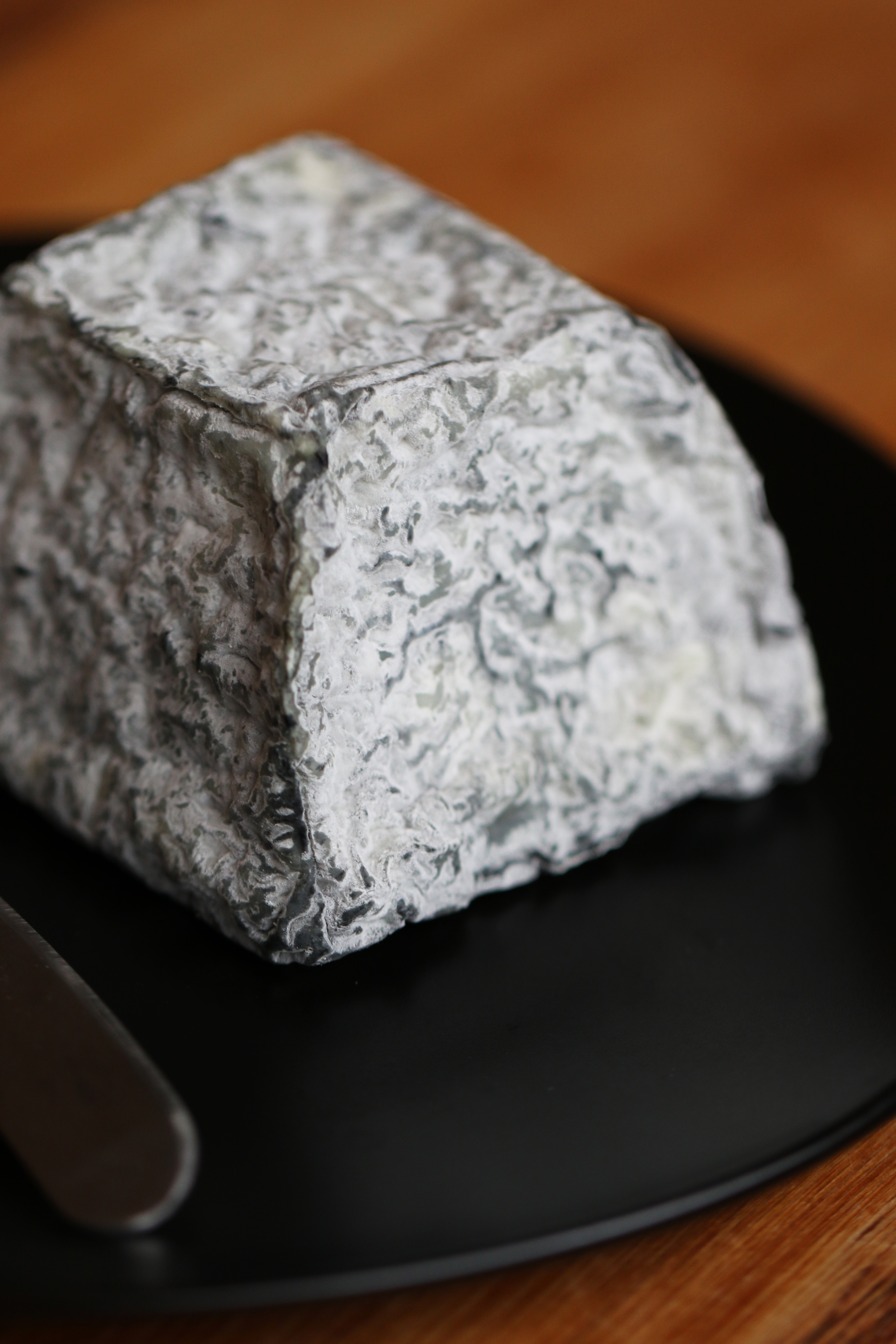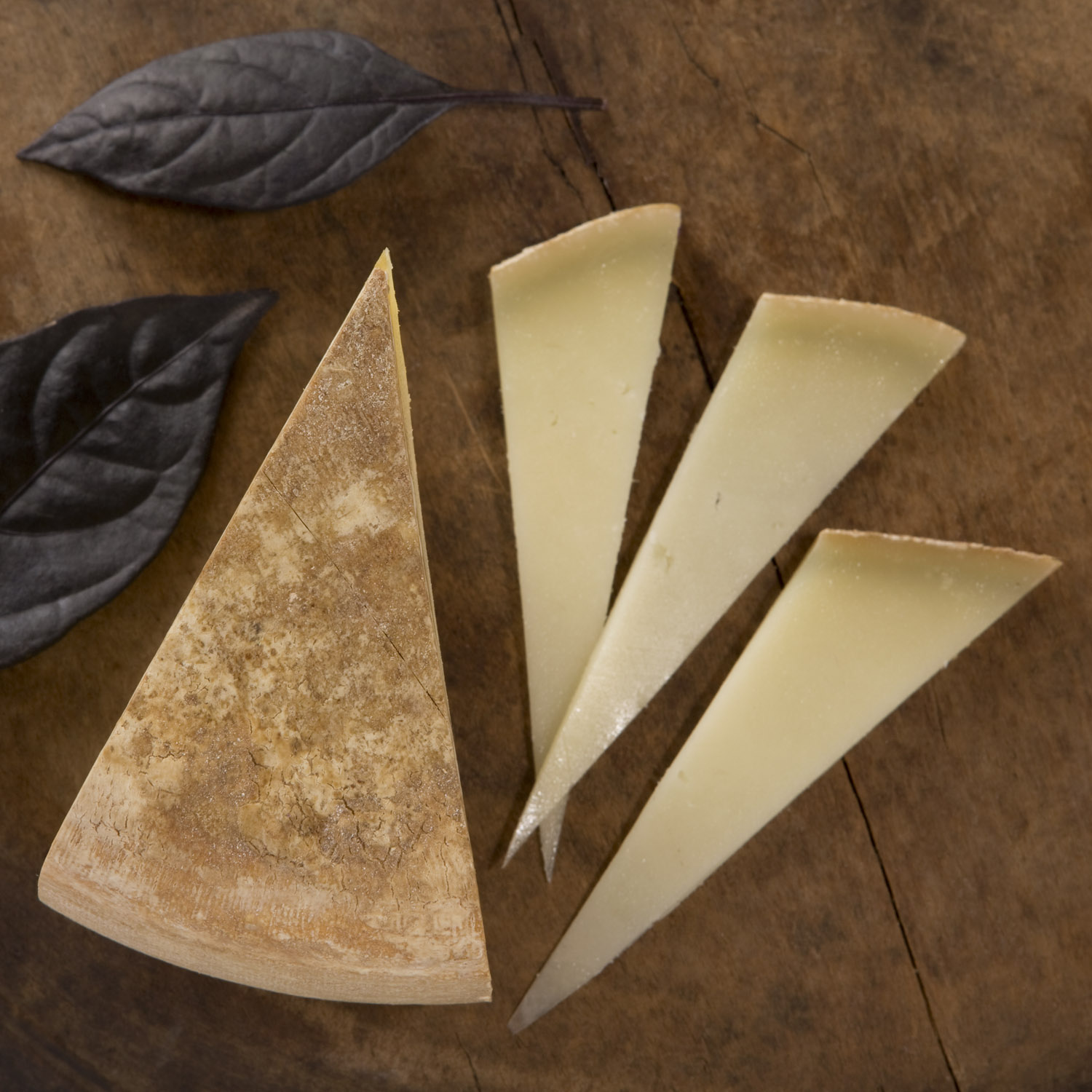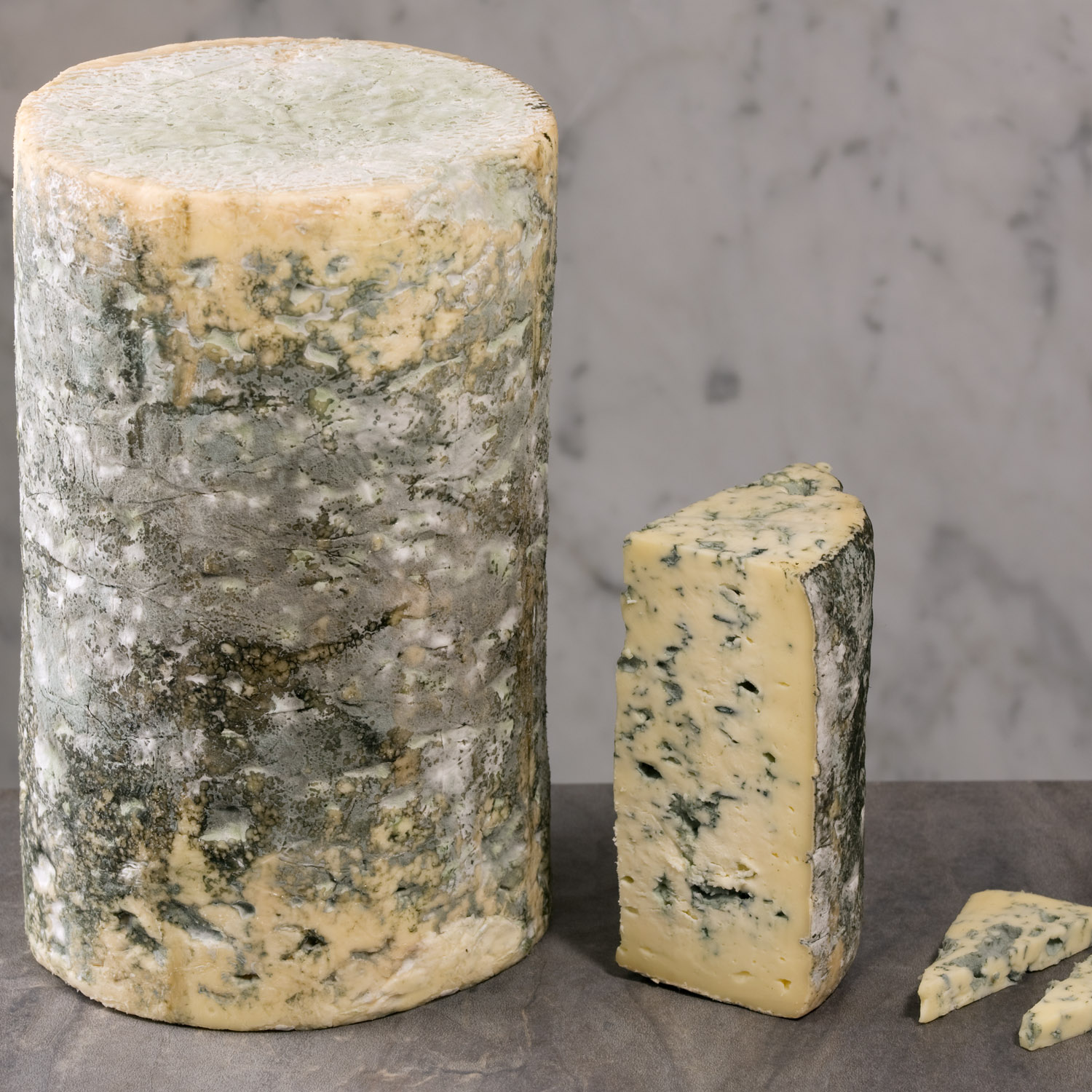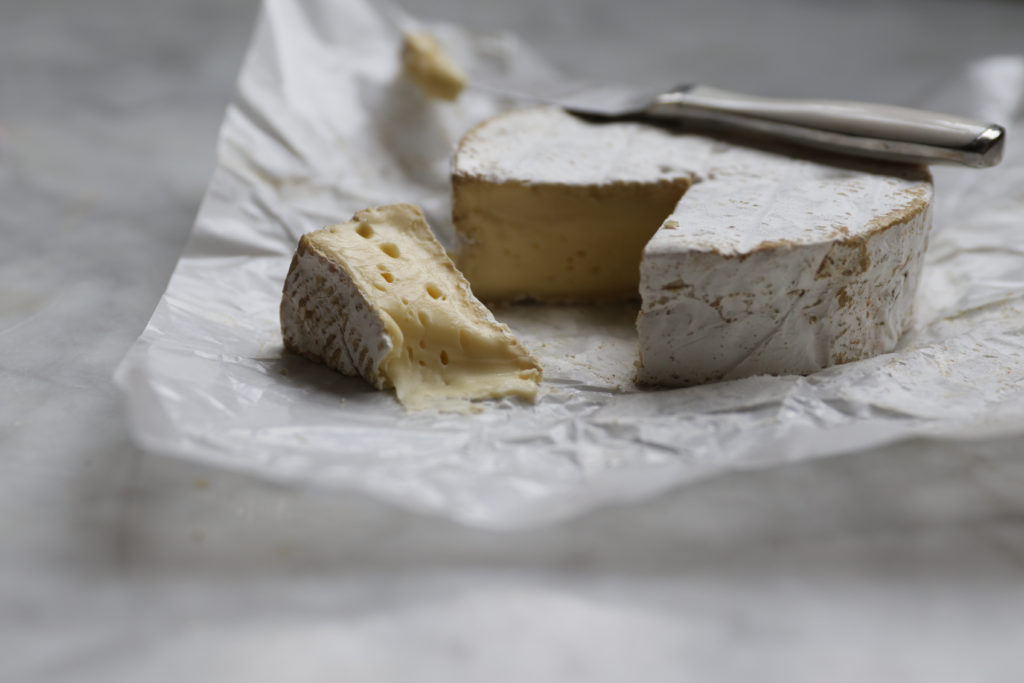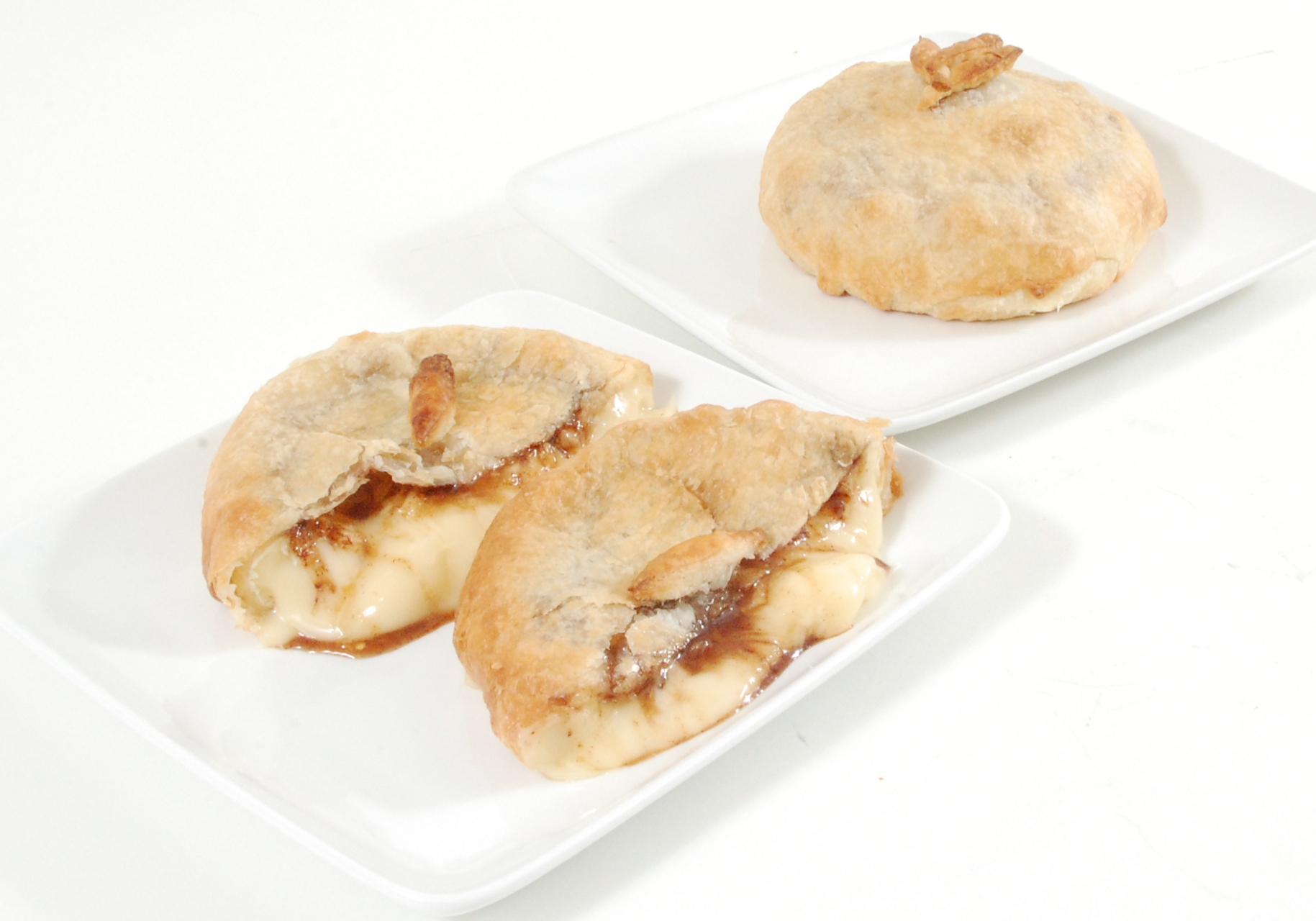We wouldn’t be much of a cheese shop if we didn’t have an undying love for French cheeses. This week is Cheese Week, so of course we turned to our favorite cheeses to highlight during the festivities. The French have given us so much when it comes to cheese – and it’s not just the humble Brie. France has given us cheeses that run the gamut – creamy Camemberts, herbal chevres, nutty sheep’s milks, and minerally blues. We”d love to tell you about our favorite Frenchies, just in time to inspire your own Cheese Week celebrations!
We know your first thought when we talk about French cheese is Brie – but instead, why not try a little wheel of Camembert? Historically inspired by the Brie recipe (it was said to be passed down by a priest who had come from the province of Brie, but the recipe was corrupted in the telling), Camembert is creamier, more mushroomy, and has an earthiness that really tastes as though you’re enjoying it in the fields of France.
If you’re looking for creamy, buttery sweet cheese, look no further than the land of Burgundy. Not only do they have delectable wine, but their cheese cannot be beat – Delice de Bourgogne is full of fresh milk flavors, with hints of sweet cream and clean hay. You can start your day with Delice paired with apricots and drizzled with honey as a tasty breakfast – or dessert if you add a glass of champagne on the side.
The Loire Valley has created oh so many chevre cheeses, but Valencay stands out. Stories say that it was originally shaped like a pyramid, but when Napoleon returned from his military failings in Egypt, he demanded the pointed tops be removed, even going so far as to slice them off himself with his sword. While we’re not sure how true that is, the stunted pyramid shape remains, and the minerally, piquant goat’s milk is still one of our faves.
If you’re looking for ancient traditions, you’ve found it. It’s said that Ossau Iraty is one of the first cheeses ever produced, and it’s only gotten better with age. Warm, buttery sheep’s milk curds are heated and pressed – think rich, toasty wheat aromas, and nutty, grassy-sweet flavors that make it that sort of cheese that stands up against anything – bold reds, toasty brown ales, whatever you’d like to pair it with.
A blue developed so early on that the Druids and Gauls were said to have worked together to create it (read: a veryyyyy long time ago). It’s even said to go back to the Roman occupation of France nearly 1,000 years ago! They obviously perfected the recipe over the years, because we love nothing more than the earthy, mushroomy cheese with hints of sweetness and an amazing velvety texture. Even the staunchest blue hater will fall in love with this Frenchie.
To celebrate Cheese Week, we’ve got some great discounts on some of our French Faves! Check it out!

